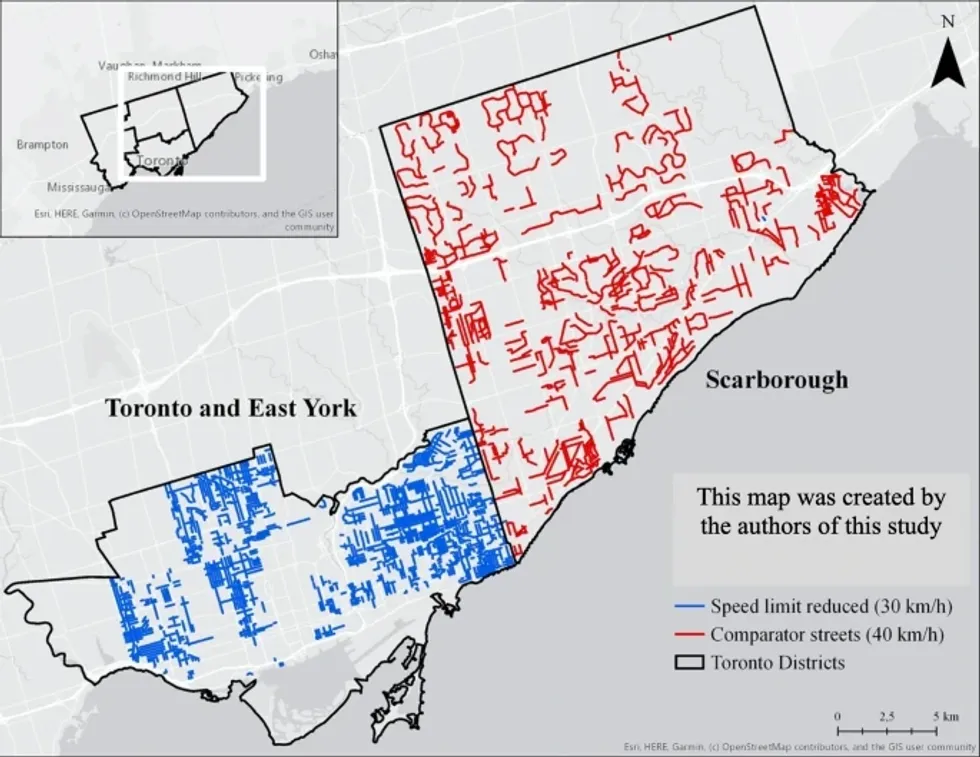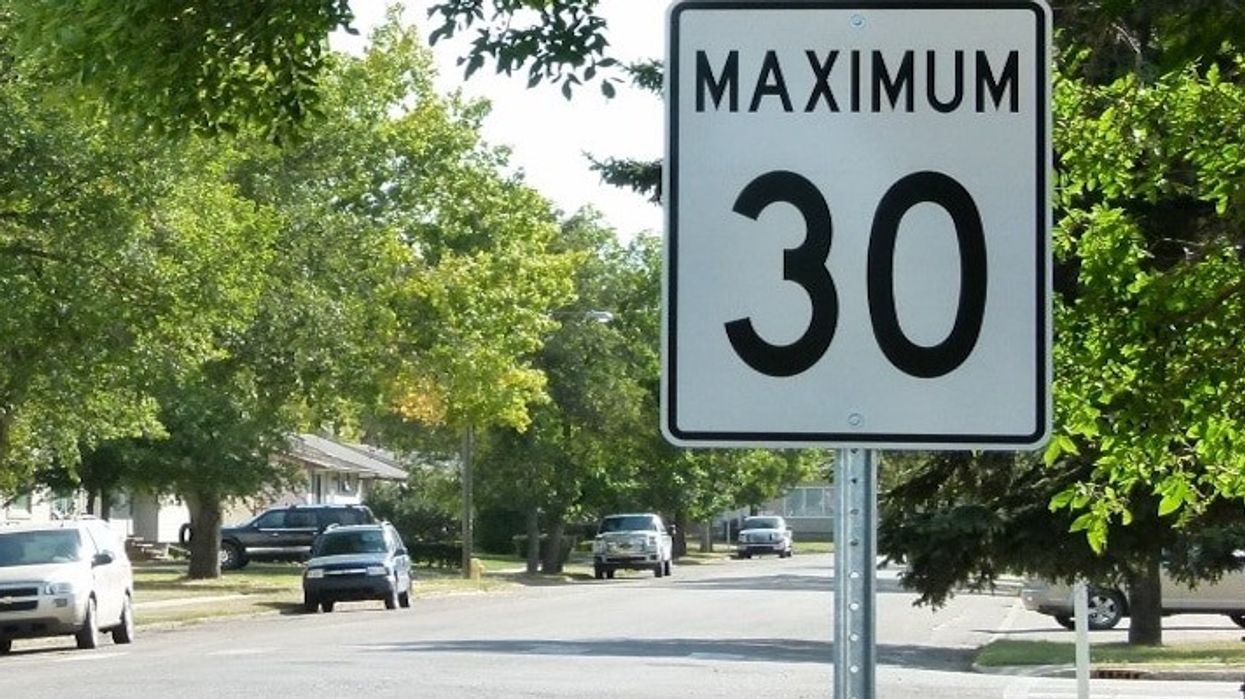It became a lot safer for pedestrians in certain parts of the city after speed limits were reduced on local roads, a new study has revealed.
[Want to see more stories like this? Sign up for our weekly newsletter!]
The study, which was published in the journal of BMC Public Health, looked at the effect of reducing the speed limit to 30 km/h from 40 km/h on a total of 850 local roads in Toronto and compared them to 390 roadways in Scarborough where the speed limit remained at 40 km/h.
"Pedestrian related deaths have recently been on the rise in Canada. The effect of changing posted speeds on the frequency and severity of pedestrian motor vehicle collisions (PMVC) is not well studied using controlled quasi-experimental designs," reads the report.
"The objective of this study was to examine the effect of lowering speed limits from 40 km/h to 30 km/h on PMVC on local roads in Toronto, Canada."
The study focused on streets in central Toronto and East York neighbourhoods that implemented slower speed limits in 2015 and 2016.
READ: Toronto Is Installing 50 New Photo Radar Cameras By Spring 2020
According to the study, in the areas where the speed limit was reduced to 30 km/h, there was a 28% reduction in the number of police-reported collisions. Additionally, the study found that injury severity also decreased by 67% in the areas where the speed limits were reduced.

Moreover, the study found the chance of surviving a collision with a motor vehicle travelling at 50 km/h is less than 20%; whereas, survival increases to 50% at 40–45 km/h and 90% at 30 km/h.
READ: Toronto Ranked One of the Most Walkable Cities in the Country
City councillor and board of health chair Joe Cressy, who has been vocal about lowering speed limits in the city says, "lowering speed limits saves lives. It’s not rocket science."
The study said crashes are more likely when speed limits are higher as drivers have a reduced field of vision, shorter reaction time, and increased stopping distance once the brakes are engaged, whereas, at lower speeds, pedestrians can make more effective decisions about when to cross the road and drivers have sufficient time to stop.
According to the study, from January 2013 to December 2018, a total of 10,624 pedestrian collisions were reported in the City of Toronto, 230 of these incidents were fatal. Furthermore, according to the Toronto Police, there has already been four fatal traffic collisions involving a pedestrian so far this year.
While the city has beefed up its Vision Zero plan recently, there is still a lot of work to be done and the city needs to continue reducing speed limits on local roads to see pedestrian-related injuries and deaths decline.





















